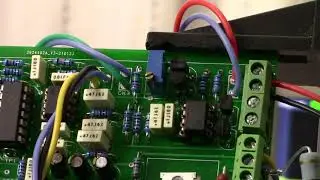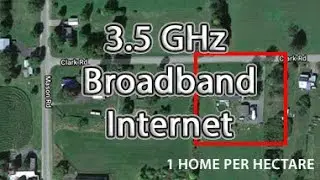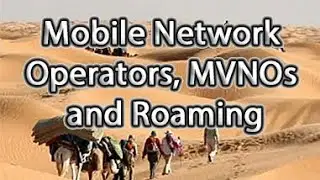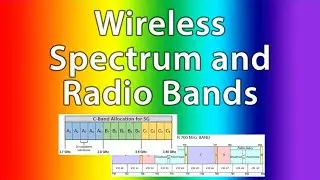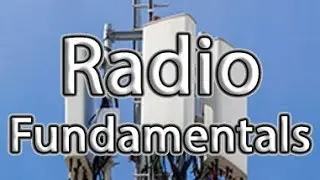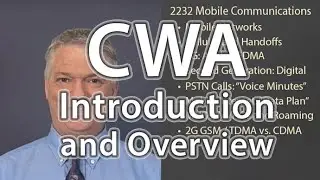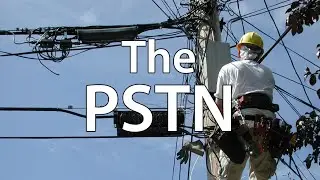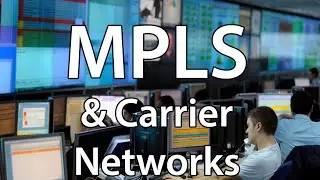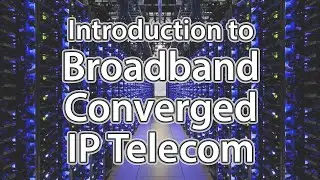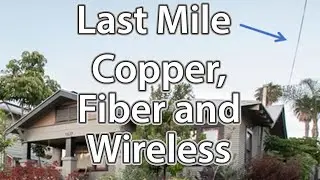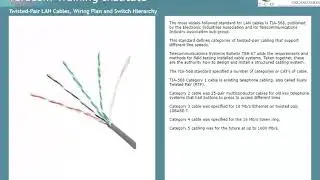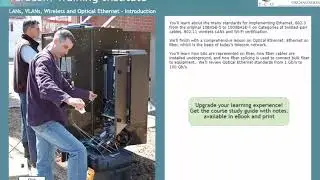MPLS and Carrier Networks - Course Introduction
Watch in full quality: https://www.teracomtraining.com/onlin...
Carrier Packet Networks • Technologies • MPLS • MPLS VPNs • SLAs • CoS • Integration & Aggregation
MPLS and Carrier Networks is a comprehensive training course designed to build a solid understanding of carrier packet networks and services, the terminology, technologies, configuration, operation and most importantly, the underlying ideas… in plain English.
We'll cut through the buzzwords and marketing to demystify carrier packet networks and services, explaining Service Level Agreements, traffic profiles, virtual circuits, QoS, Class of Service, Differentiated Services, integration, convergence and aggregation, MPLS and other network technologies, and how they relate to TCP/IP, without bogging down on details.
Course Lessons
1. Introduction
2. Carrier Packet Network Basics
3. Service Level Agreements
4. Virtual Circuits
5. QoS Requirement for Voice over IP
6. MPLS
7. TCP/IP over MPLS
8. Differentiated Classes of Service using MPLS
9. Integration and Convergence using MPLS
10. Managing Aggregates of Traffic with MPLS Label Stacking
11. MPLS Services vs. Internet Service
Based on Teracom's famous Course 101, tuned and refined over the course of over 25 years of instructor-led training, you will gain career- and productivity-enhancing knowledge of the structure, components and operation of carrier packet networks and services, how they are implemented, packaged and marketed by carriers and how they are used by government, business… and other carriers.
Detailed Description
MPLS and Carrier Networks is a comprehensive, up-to-date course on the networks companies like AT&T build and operate, how they are implemented, the services they offer, and how customers connect to the network.
This course can be taken by those who need just an introduction to carrier networks and MPLS, as well as by those who need to build a solid base on which to build project- or environment-specific knowledge.
In the previous course, we used a private network, i.e. dedicated point-to-point circuits connected with routers, as the simplest framework for understanding packets, bandwidth on demand, routers, and network addresses.
In this course, we will take the same idea and apply it again at the carrier network level: replacing the dedicated lines with bandwidth on demand service from a carrier between the customer locations.
We'll spend much of this course understanding a powerful traffic management tool called virtual circuits, how they are implemented with MPLS, and how MPLS can be used to provide differentiated services, aggregate traffic and implement convergence.
Without bogging down on details, we'll cut through buzzwords and marketing to demystify:
Carrier packet networks and services
Customer Edge (CE) and Provider Edge (PE)
Service Level Agreements
Traffic profiles
Virtual circuits
QoS, Class of Service and Differentiated Services
Integration, convergence and aggregation
MPLS and other network technologies
How this relates to TCP/IP
How MPLS is used for business customer VPNs
How MPLS is used for integrated access:
How all services are carried together on one circuit
How MPLS is used to prioritize and manage IP packets
"MPLS services" vs. the Internet
Detailed Course Outline
1. Introduction
Course introduction and overview
2. Carrier Packet Network Basics
Customer Edge, Provider Edge, Access and Network Core
3. Service Level Agreements
Contractual specification: Traffic Profile and Class of Service
4. Virtual Circuits
Traffic Classes and pre-determined routes
5. QoS Requirement for Voice over IP
How packetized voice works and what is needed
6. MPLS
MPLS components, LER, LSP, LSR jargon, basic operation
7. TCP/IP over MPLS
Tracing a file transfer through the equipment and protocols
Implementing Virtual Private LAN Service with MPLS
8. Differentiated Classes of Service using MPLS
Different transmission characteristics for different traffic
9. Integration and Convergence using MPLS
Saving money with Integrated Access: all traffic on one network technology
10. Managing Aggregates of Traffic with MPLS Label Stacking
Aggregating similar traffic to be managed as a single entity
11. MPLS Service vs. Internet SD-WAN Service
Understanding the key difference: guarantees or not. The Future.
Download the Course Brochure PDF for the full detailed description:
https://www.teracomtraining.com/pdfs/...




